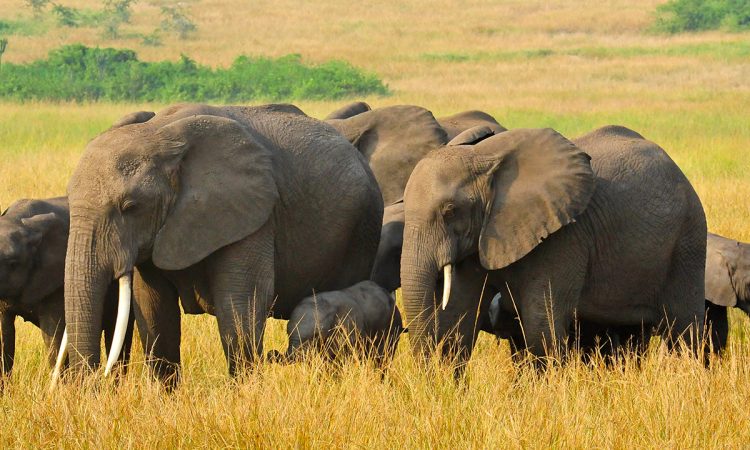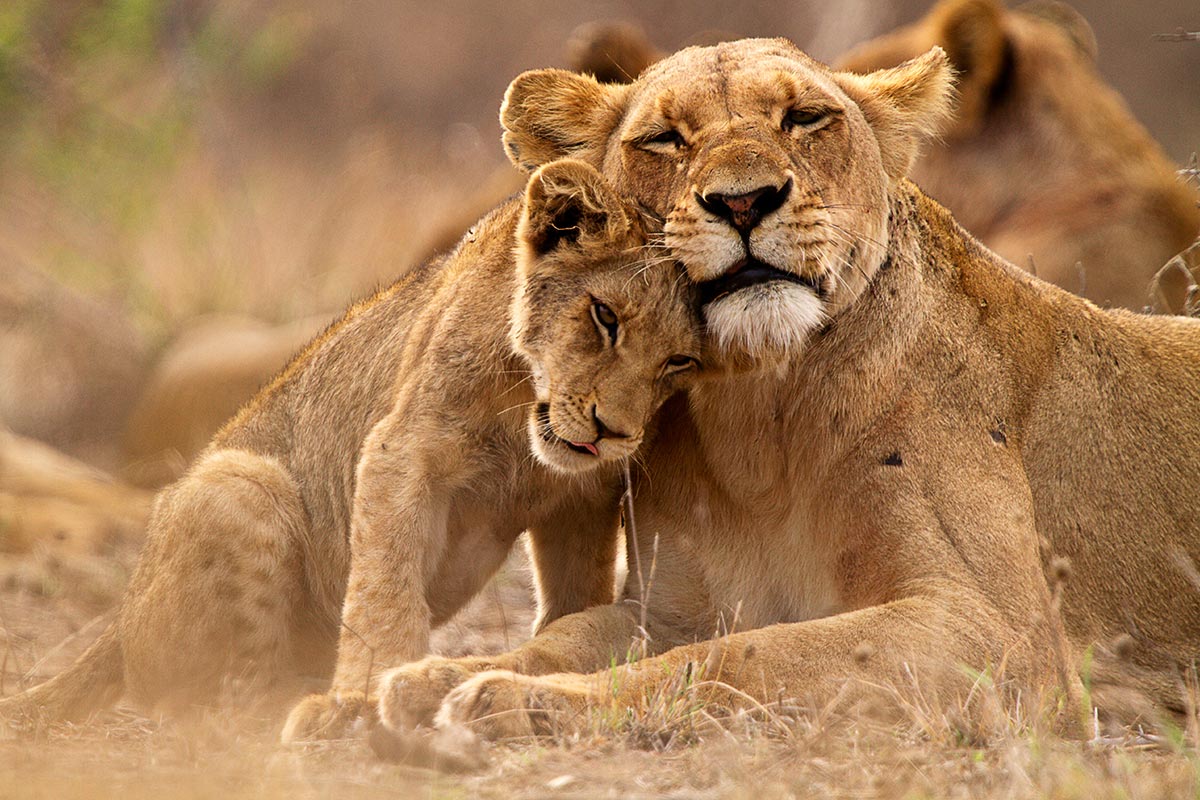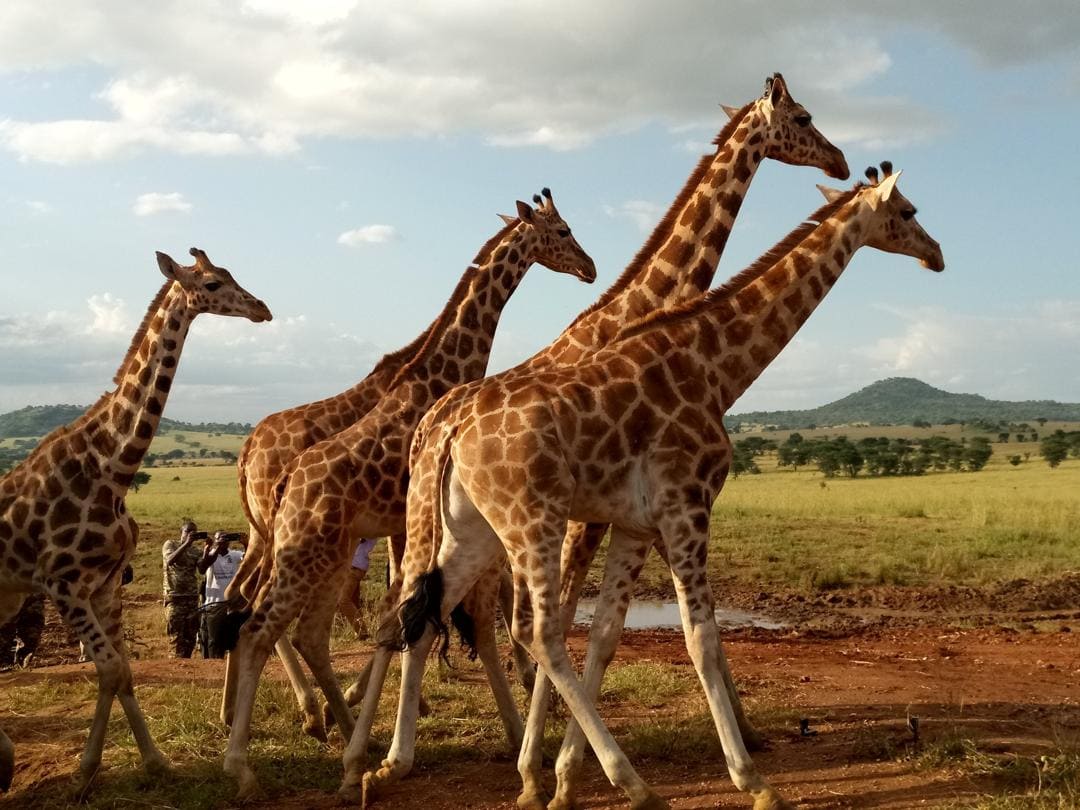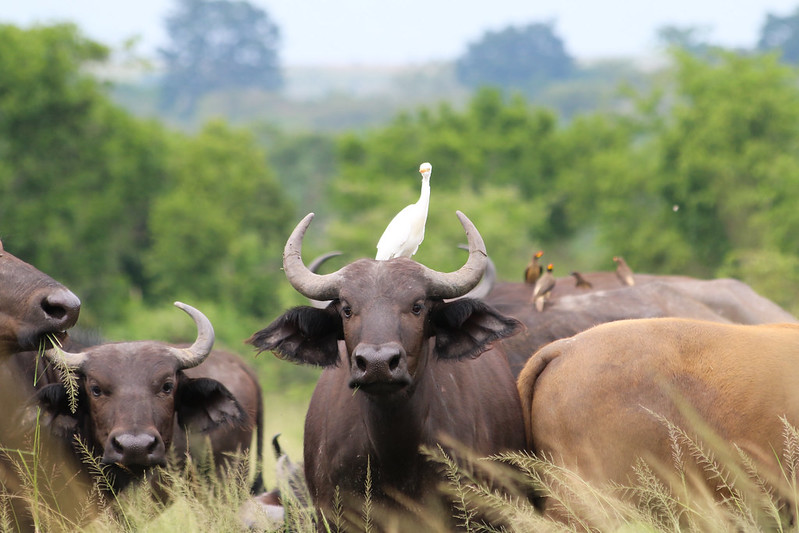Queen Elizabeth National Park
When travelers think about the best wildlife destinations in Africa, one of the first questions that arises is: why is Queen Elizabeth National Park considered Uganda’s safari crown jewel? This iconic park, located in western Uganda and stretching across the Rift Valley floor, is the most visited and most diverse of all Uganda’s protected areas. Known for its breathtaking landscapes of rolling savannahs, volcanic crater lakes, and lush wetlands, Queen Elizabeth National Park is a flagship of Uganda Safaris, offering travelers an unparalleled mix of wildlife encounters, birding opportunities, and cultural experiences.

Why is Queen Elizabeth National Park Uganda’s Safari Crown Jewel?
What sets Queen Elizabeth National Park apart is its extraordinary biodiversity. The park is home to over 95 mammal species, including elephants, lions, buffaloes, leopards, and hippos, along with more than 600 species of birds. Its famous tree-climbing lions in the Ishasha sector attract safari enthusiasts from around the world, while the Kazinga Channel boat cruises provide some of the best opportunities to observe hippos and elephants at close range.
But a visit to Queen Elizabeth National Park is not only about wildlife. The surrounding communities offer authentic cultural encounters, and the park sits strategically along Uganda’s southern safari circuit, making it an ideal stop before or after Uganda Gorilla Trekking Safaris in Bwindi Impenetrable National Park. At Otter African Safaris, we design journeys that connect Queen Elizabeth with gorilla trekking, chimpanzee tracking, and birding, ensuring a multi-dimensional experience that ranks among the Uganda Best Safaris.
What Wildlife Can Be Seen in Queen Elizabeth National Park?
Many travelers ask: what wildlife can be seen in Queen Elizabeth National Park? The answer is that this park is one of the richest wildlife havens in East Africa. Lions, including the famous tree-climbing prides of Ishasha, roam freely across the savannah. Large herds of elephants and buffaloes dominate the plains, while leopards lurk in the shadows of the Maramagambo Forest. Hippos are abundant along the Kazinga Channel, and antelopes such as Uganda kobs, bushbucks, and topis thrive in open grasslands.
For visitors planning Uganda Wildlife Safaris, Queen Elizabeth National Park offers classic game drives in Kasenyi Plains, where lions are often seen hunting Uganda kobs. In addition, the Ishasha sector provides a rare opportunity to see lions resting in fig trees—an iconic sight unique to this region. Travelers frequently ask, can Queen Elizabeth National Park be combined with Uganda Gorilla Safaris? The answer is yes. Its location between Kibale Forest National Park and Bwindi Impenetrable National Park makes it a natural addition to itineraries focused on gorillas and chimpanzees.
Moreover, Queen Elizabeth National Park is an important stop for those planning Uganda Best Safaris, because it balances the thrill of big game viewing with the serenity of crater lakes and wetlands. The variety of habitats ensures that no two game drives are the same, and with expert guides from Otter African Safaris, travelers enjoy insights into animal behavior, conservation efforts, and the delicate balance of ecosystems.
Why is Queen Elizabeth National Park Important for Uganda Birding Safaris?
Bird enthusiasts often wonder: why is Queen Elizabeth National Park a top destination for Uganda Birding Safaris? With more than 600 recorded species, the park is one of the richest birding areas in Africa. It is home to both forest and savannah species, along with migratory birds from Europe and Asia. The diversity includes the African skimmer, grey-crowned crane, martial eagle, papyrus gonolek, and shoebill stork.
One of the best birding experiences in Queen Elizabeth National Park is the Kazinga Channel boat cruise, where travelers can see kingfishers, cormorants, and pelicans alongside hippos and crocodiles. The Maramagambo Forest is another prime birding spot, while crater lakes attract flamingos during certain seasons. For travelers seeking Uganda Birding Safaris, combining Kibale’s forest bird species with the water and savannah birds of Queen Elizabeth creates a well-rounded experience.
A common question is: can birding in Queen Elizabeth National Park be combined with Uganda Gorilla Trekking Safaris? Absolutely. After birding in the park, travelers can head south to Bwindi Impenetrable National Park, where the misty forests not only harbor gorillas but also endemic bird species like the Rwenzori turaco. This combination of birding and primate adventures makes itineraries richer and positions Queen Elizabeth as an essential part of Uganda Best Safaris curated by Otter African Safaris.
What Cultural Experiences Can Be Enjoyed Around Queen Elizabeth National Park?
Safari-goers often ask: what cultural experiences can I enjoy around Queen Elizabeth National Park? The park’s surroundings are inhabited by diverse communities, including the Bakonzo, Basongora, and Banyankole, who offer immersive cultural experiences. From traditional dances to storytelling, craft-making, and cattle-keeping practices, these encounters deepen travelers’ understanding of Uganda’s heritage.
The Katwe Salt Lake community tour is among the most fascinating cultural excursions near Queen Elizabeth National Park. Visitors learn how locals have extracted salt from the lake for centuries, sustaining livelihoods while preserving traditions. Another highlight is a visit to Kasoga Community, where travelers enjoy canoeing, birdwatching, and cultural performances that support local conservation initiatives.
Many ask: why include cultural tours in Uganda Cultural Safaris alongside Queen Elizabeth National Park? Because these experiences reveal the human side of conservation. Meeting communities that live alongside wildlife gives context to the safari, while supporting local economies ensures tourism benefits are shared equitably.
Cultural safaris also fit perfectly with Uganda Gorilla Trekking Safaris. After gorilla trekking in Bwindi, travelers can head north into Queen Elizabeth for wildlife and community experiences, creating a holistic safari journey. At Otter African Safaris, we prioritize such cultural interactions to deliver authentic, responsible, and memorable Uganda Best Safaris.
How Does Queen Elizabeth National Park Complement Uganda Chimpanzee Safaris?
Another frequent question is: how does Queen Elizabeth National Park complement Uganda Chimpanzee Safaris? While the park is best known for its savannah wildlife, it also offers chimpanzee tracking in the Kyambura Gorge, often called the “Valley of Apes.” This dramatic gorge cuts through the savannah and is home to a small but habituated community of chimpanzees. Tracking them is more challenging than in Kibale, but the experience is thrilling and unique.
For travelers focused on Uganda Chimpanzee Safaris, Kyambura provides an alternative to Kibale Forest, and its combination with game drives in Queen Elizabeth ensures a varied safari experience. Trekkers often ask: can chimpanzee tracking in Kyambura Gorge be combined with Uganda Gorilla Safaris? The answer is yes. Many itineraries link chimpanzees in Kyambura with gorillas in Bwindi and wildlife in Queen Elizabeth, giving travelers a complete primate and big game experience.
By including chimpanzees, gorillas, and savannah wildlife in one journey, Queen Elizabeth National Park becomes a critical connector of Uganda’s safari circuit. It transforms a simple wildlife trip into one of the Uganda Best Safaris, offering unparalleled diversity. With Otter African Safaris, these journeys are carefully tailored to maximize time, comfort, and the richness of each encounter.
Can Queen Elizabeth National Park Be Combined with Uganda Gorilla Trekking Safaris?
Travelers planning primate adventures often ask: can Queen Elizabeth National Park be combined with Uganda Gorilla Trekking Safaris? The strategic location of the park makes this combination seamless. Just a few hours’ drive separates Queen Elizabeth from Bwindi Impenetrable National Park, home of the mountain gorillas. This proximity allows travelers to experience both gorillas and classic game drives in a single itinerary.
For example, one might begin with chimpanzee tracking in Kibale, continue to Queen Elizabeth National Park for lions, elephants, and boat cruises, and then proceed south to Bwindi for gorilla trekking. This flow ensures that travelers enjoy the full range of Uganda Gorilla Safaris while also exploring the savannah wildlife of Queen Elizabeth.
So, why is this combination considered among Uganda Best Safaris? Because it blends primates, big game, birding, and cultural experiences into one journey. It showcases Uganda’s diversity in a way few destinations can rival. At Otter African Safaris, we specialize in creating such integrated itineraries, ensuring that every traveler enjoys a complete and transformative safari experience.

Why Choose Otter African Safaris for Queen Elizabeth National Park?
In conclusion, the question remains: why visit Queen Elizabeth National Park with Otter African Safaris? The answer lies in expertise, trustworthiness, and passion for delivering authentic travel experiences. With its rich wildlife, incredible birdlife, cultural treasures, and proximity to gorilla trekking, Queen Elizabeth is not just another national park—it is a microcosm of Uganda itself.
By combining Uganda Wildlife Safaris, Uganda Birding Safaris, Uganda Cultural Safaris, Uganda Chimpanzee Safaris, and Uganda Gorilla Trekking Safaris, Queen Elizabeth National Park stands as a cornerstone of Uganda Best Safaris. At Otter African Safaris, we ensure that every trip here is thoughtfully planned, responsibly managed, and deeply enriching.
So, whether your dream is to see tree-climbing lions, sail past hippos on the Kazinga Channel, or trek gorillas in the misty forests of Bwindi, the journey begins with Queen Elizabeth National Park. Trust Otter African Safaris to guide you into this world of wonder, combining professionalism with passion, and making every safari not just a trip—but a life-changing story.

